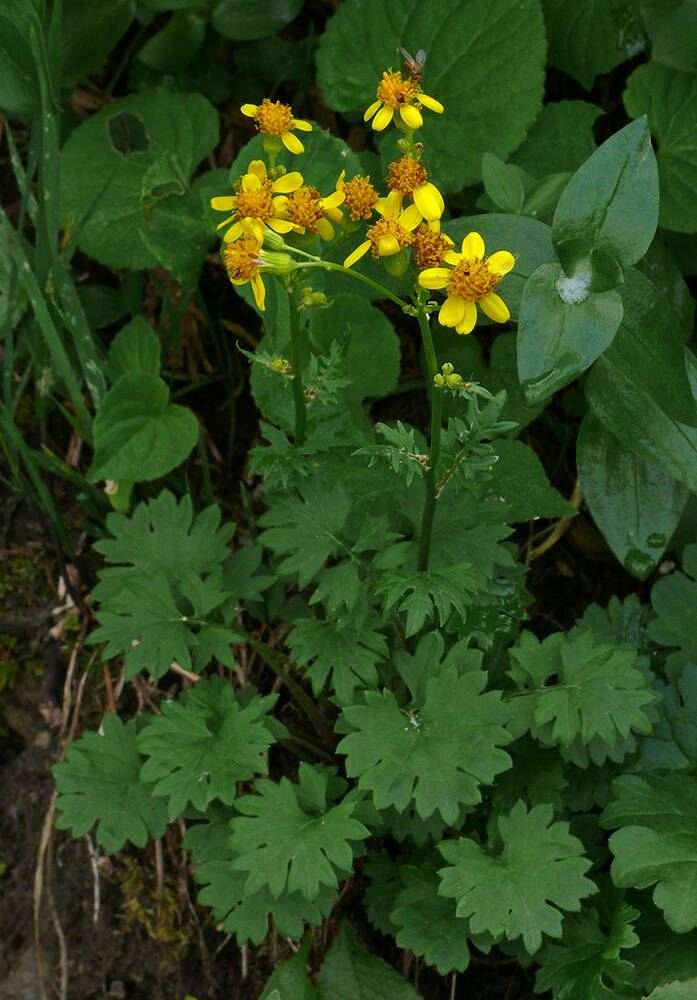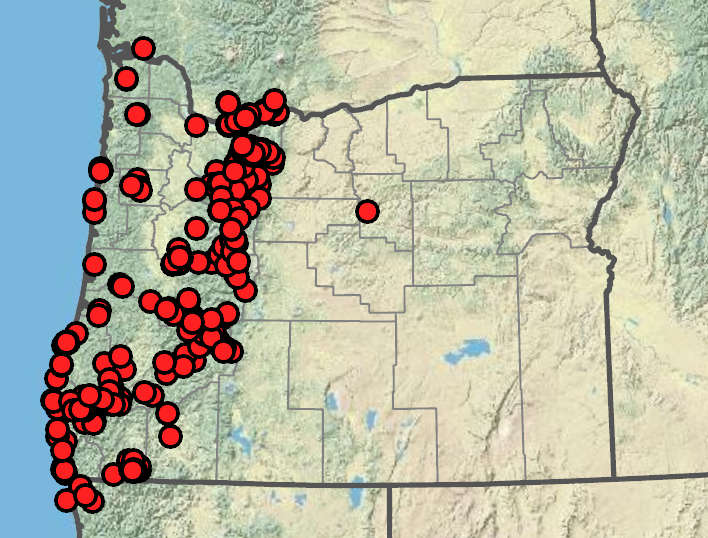Packera breweri
Packera bolanderi
Bolander's ragwort
1–3, loosely clustered, glabrous.
blades orbiculate to lyrate, bases cordate to sub-cordate, ultimate margins shallowly to deeply incised, with distinct lateral lobes in 1–3 pairs; midribs usually winged, petiolate.
lower orbiculate to lyrate, with distinct lateral lobes in 1–3 pairs; middle and upper cauline reduced, lanceolate, incised; lower petiolate; upper sessile or clasping.
campanulate.
8 or 13;
rays 10–15+ mm.
30–45+;
corolla tubes 3–4 mm;
limbs 3.5–4.5 mm.
8, 13 or 21, 5–8 mm, dark green;
surfaces glabrous or sparsely pubescent.
conspicuous.
2.5–3.5 mm, glabrous;
pappi 5–7 mm.
8–15+; in corymb- or umbel-like arrays, radiate;
peduncles glabrous;
bracts absent or inconspicuous.
=46.
Packera breweri
Packera bolanderi
The two varieties of Packera bolanderi have been treated as species by some authors. However, the morphological characteristics used to distinguish them vary widely within some populations. Although the morphological distinction is weak, habitat and elevation records lend support for recognizing two varieties.
Debra Trock



